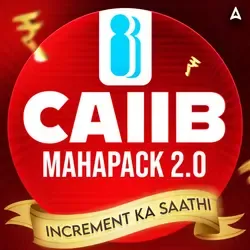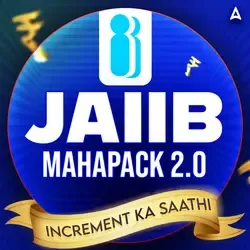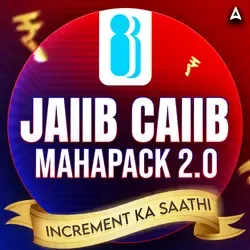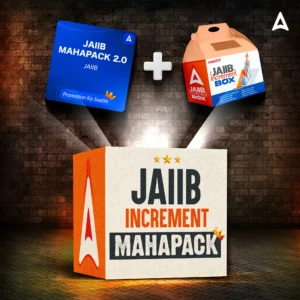Banking Technology Notes: The Indian Institute of Banking and Finance(IIBF) announced the JAIIB Exam Date for the November session and it is scheduled to be on the 12th, 13th, and 20th of November 2022. Candidates are preparing in a full-fledged manner to qualify for the JAIIB Exam 2022. The Principles and Practices of Banking(PPB) paper of JAIIB have 5 Modules. To help the aspirants in their preparation we have provided the Banking Technology(third module) Notes. It will be beneficial for quick revision so that a candidate can boost up their score in the JAIIB PPB Exam 2022. The notes of all the units of Banking Technology are discussed in the post below.
Banking Technology Notes Unit 1: Essentials of Bank Computerization
Bank Computerization’s concept practically started after 1980-81. In the year 1983-84, after setting up a committee in the year 1983 under the chairmanship of the then Deputy Governor of RBI, Dr. C. Rangarajan Bank Computerization attained speed.
Why was Computerization needed?
The four main aim of computerization in banking are to improve: customer service, housekeeping, decision-making and productivity along with profitability.
Stand-alone Computer System: Stand-alone computer system is used by only one person at a time. Stand-alone Computer Systems are best for decision-making process, which involves processing and analysis of data. Stand-alone systems are also capable of handling multimedia, high-quality graphics, fax messages, etc. in today’s time.
Multi-user Systems: Multi-user systems are computers on which many people can work at the same time. Mini computers, Main Frame Computers, Micro-computers and the more powerful Super Computers are under the category of Multi-user systems.
Multi-user Computer Networking: In Multi user Computer Networking system computers are based on the centralized processing concept. All information is stored and processed at the main central machines and a number of terminals are attached to the main computer. The main computer can store information and possesses high-processing speeds that enables a large number of users to be connected to the main central computer. In which every user has his or her own terminal. Most of the banking systems are developed using the centralized computing concept.
Advantages of Centralized Data Processing System :
- Availability of corporate level information at one place is possible
- Cost of acquiring hardware, software and other infrastructure is more profitable than acquiring the same for individual departments
- Due to the high volume of data processing the computing resources can be fully used.
- Technical Manpower can be efficiently managed at the central level
- Resources like leased telephone lines, satellite links, etc., can be shared among the various departments.
Computerization at the branch level can be used to:
- Provide better and speedy customer service
- Housekeeping services are improved
- Branch level data for decision making is analyzed
- Various Reports are generated
Total Branch Automation: Total Branch Automation is a real time online banking. When a transaction is done through a terminal, the transaction is recorded, verified and authenticated and all corresponding updates are reflected instantly. Many outputs such as ledger extracts, passbooks, vouchers, statements of accounts of customers, etc., are generated online.
It is possible to provide the ‘single window’ transactions concept. That means a customer can approach any counter for completing all his or her transactions.
Off-site ATMs are also linked to the branch system to enable the customer to bank anytime and anywhere. Software and hardware requirements depend upon the size of the branch.
Computerization at Regional/Circle/Zonal Office: Regional Office or Zonal Office acts in between branches and the head office. The most common tasks done by the regional office/zonal office are: branch profiling, inter-branch reconciliation, credit monitoring, personnel data management, etc.
Computerization at Head Office Level: The head office of a bank is responsible for bank level planning, and controlling functions and policy decisions. The head office activities are divided into different functional areas like: operations, planning, personnel, international business, services, etc.
The computerization at various functional areas may include application areas such as personnel management and administrative support, funds management, investment portfolio management, branch profiles, credit information system, etc.
Local Area Network (LAN)
The computer network that links computers along with the peripherals within a localized area is known as LAN. LAN does not extend beyond 150 metres however, it can be up to a maximum spread of 1 km and the number of devices supported may also vary from 2 to as many as 1000. In LAN, each independent system is known as a node and when each single nodes are interconnected, it is known as a LAN. Usually, there will be one central node (Server) providing and controlling all the services of the network. The client nodes route their requests to the server and obtain the necessary services.
Topology (Layout): Topology means the method by which the devices are interconnected.
Bus Topology: All devices on the network are connected to a single continuous cable. Transmission from any station travels the length of the bus in both directions and is received by all other stations. Advantage of bus topology is that it is quite easy to set up. If one station on the LAN fails, it will not affect the rest of the network
Data transmission is possible in one direction only. The breakdown of any one station on the ring can disable the entire LAN.
Star Topology: In the case of star topology, the central node is often the master.
Each of the other nodes is joined to the master by separate links. Star Topology cannot handle large traffic as every transaction has to pass through the central node. However, if one node fails, it will not affect the network.
Protocols: The rules for communication between similar modules of processes, usually in different nodes. Protocols define message formats and the rules for message exchange. It controls priority and sequence of transmission, errors in transmission, and the process of beginning and concluding conversion. The network protocols depend on the adapters. Some of the commonly used types of adapters
are Ethernet and Token-Ring. A multiplexer is used to receive signals from several communication lines and pass on to one communication line and vice versa.
Network Operating System: The main function of the Network Operating software is to set up some computers as hosts, or servers, and some computers as clients to those hosts. The servers manage the printer sharing, file sharing and communications link sharing to their clients.
Advantages of using LANs in banks:
- The expensive resources such as computer hardware and software can be shared by several users which brings down the overall cost of computerization.
- The information stored on the host computer is available to all users of the system so it is not needed to duplicate the databases.
- As all the terminals are intelligent terminals, the processing load is shared between the various machines and there is no overloading on any single machine.
Disadvantages of a LAN:
- Complicated software has to be installed for data management.
- Security risks are higher, since each user access the host computer independently.
- Maintenance cost of a system is high, since it has to be done frequently.
Wide Area Network (WAN)
Wide Area Networks (WAN) are defined as a large-scale computer network spread over a span of sizeable geographic area, normally the telecommunication network is utilized. In the banking sector, the WANs are generally used to interconnect branches with the regional offices, and regional or zonal offices to head office, etc.
Uninterrupted Power System (UPS): Uninterrupted power system provides clean and reliable AC power to the computer systems protecting them from power blackouts, brownouts, swells, sags, surges, and interface. In case of a power failure, the UPS attached with the file server automatically takes over the power supply to the file server or to the main computer to eliminate the chance of data loss.
Core Banking: In core banking, there is a central database for the bank and transactions are done centrally in online medium. It offers integrated products and services to customers round the clock.
Business Components are:
- having retail customer banking modules, Deposits, loans, bills, remittances, locker, clearing, etc., Trade finance/forex modules, Government business modules, corporate finance and service branch modules, enhanced MIS modules, modules for business intelligence, integration with the existing ATMs, tele-banking, debit card, kiosks and other delivery Channels, any branch banking, Internet banking and call centre, To interface with existing corporate systems like treasury, IBR, centralized accounting system, HRMS, ALM, credit appraisal and management, credit monitoring and NPA management, etc., interfacing with systems like NDS, SFMS, RTGS, CFMS, etc.
Benefits:
- Establishment of a reliable centralized data repository for the bank is enabled
- Data warehousing and data mining technologies for business intelligence is facilitated
- Integrated customer centric services like online ATMs, telebanking, internet banking, any branch banking, kiosk banking, cash management services, etc. are implemented easily
- Centralized management information, decision support and executive information systems are enabled
- Efficient and effective MIS, ALM, risk management, etc., using the central data pool
- Enables centralized management and control with centralized data
- Standardization of the branch automation software using a single version. Quick adoption of software changes as changes are done only at the central site
- Facilitates business process re-engineering (BPR) to streamline the existing processes
- Relieves branches of jobs like data backup, MIS generation, etc.
- Infrastructure at the central location, backup location and at branches is required
- Servers are not mandatory at branch locations
- Attracts higher investment in the beginning
- Cost of implementation for further branches and delivery channels are relatively cheaper
- Core infrastructure can be used for future expansions
- No extra cost for implementation of SFMS, RTGS, CFMS, etc.
Banking Technology Notes Unit 2: Payment Systems and Electronic Banking
Automated Teller Machines (ATMs): Automated Teller Machines (ATMs) are mainly used for performing banking functions such as the withdrawal of cash or the deposit of cash or cheque, etc., by using an ATM card. The committee headed by Dr. C. Rangarajan recommended the setting up of ATMs in India.
Benefits of ATMs for the customers:
- 24 x 7 access availability
- Less time taken for transactions
- Privacy in transactions
- Any branch or anywhere banking enabled
- Acceptability of card across multiple bank ATMs, even foreign tourists can access Maestro, VISA ATMs
Benefits of ATMs for the bank:
- Setting up of ATMs cost is lower than setting up a branch
- Migration of the routine transactions to the ATMs frees the bank staff for more productive work
- ATMs serve as the important touch point for cross-selling of the bank’s products
- ATMs enables the bank to display products on the screen and serves as a media for publicity for the bank
- Less hassle in handling cash.
Components of the ATM which provide customer interface: Video Display Monitor, Keyboard, Touch Screen, Slots: There are slots in the ATM for various purposes as detailed below: Card Reader, Cash Dispenser, Envelope Dispenser, Deposit Slot
HWAK (The Intelligent Auto-teller and Netware Management System): Intelligent auto-teller systems are of a special type of auto-teller machines capable of thinking for themselves, that means they are fast, impose less demands on your banking systems and serve the customers more like a personal banker than less sophisticated auto teller systems. HWAK provides unsurpassed service even without the benefit of a reliable communication network.
Benefits: Satisfaction of Customer, High availability, Online and offline auto-recovery, Anytime full banking service, Low cost and shorter queues and less number of tellers with ease of use, Quick and early implementation, Enhanced security and audit control, Network management, Predictable cost of ownership, Comprehensive ‘One Stop’ auto banking.
White Label ATM (WLA): Automated Teller Machines (ATMs) have respective bank’s logo. So just by looking, this is SBI’s ATM, this is ICICI’s ATM and so on but White label ATM doesn’t have such Bank logo, hence called White label ATMs. RBI has given license to non-bank entities to open White label ATMs. Any non-bank entity with a minimum net worth of Rs.100 crore, can apply for white label ATMs. In Late 80s first ATM started in India; In 2012 the RBI issued guidelines for White label ATMs and in 2013 RBI provided license or permission for such ATMs.
Tata Communications Payment Solutions Limited-the first company to get RBI’s permission to open White label ATMs. They started their chain under brand name “Indicash”.
Other White label- Muthoot Finance, Srei Infra., Vakrangee Software, Prizm Payments, AGS. More than 15 companies have been given the permission.
National Payments Corporation of India (NPCI)
National Payments Corporation of India (NPCI) was started in December 2008 and the Certificate of Commencement of Business was issued in April 2009. NPCI has been incorporated as a Section 25 company under Companies Act and is aimed to operate for the benefit of all the member banks and their customers. At Present, there are ten core promoter banks ( State Bank of India, Punjab National Bank, Canara Bank, Bank of Baroda, Union bank of India, Bank of India, ICICI Bank, HDFC Bank, Citibank and HSBC).
RuPay: The Indian market provides high potential for cards penetration inspite of the challenges. RuPay Cards addresses the needs of Indian consumers, merchants and banks. The benefits of RuPay debit card are the flexibility of the product platform, high levels of acceptance and the strength of the RuPay brand-all. These all provide increased product experience.
Lower cost and affordability : As the transaction processing will happen at domestic level, it can lead to lower cost of clearing and settlement for each transaction. This will make the transaction cost affordable and will drive usage of cards in the industry.
Customized product offering : RuPay, being a domestic scheme is focused towards development of customized product and service offerings for Indian consumers.
Protection of information related to Indian consumers : Transaction and customer data related to RuPay card transactions will reside in India.
Provide electronic product options to unexplored consumers: Unexplored consumers segments in rural areas do not have access to banking and financial services. Right pricing of RuPay products would make the RuPay cards more economically feasible for banks to offer to their customers. In addition, relevant product variants would ensure that banks can target the hitherto untapped consumer segments.
Inter-operability between payment channels and products : RuPay card is uniquely positioned to offer complete inter-operability between various payments channels and products. At present NPCI offers varied solutions across platforms including ATMs, mobile technology, cheques etc. and is extremely well placed in nurturing RuPay cards across these platforms.
Credit Card: Credit Card permits the cardholder to pay for goods and services based on the holder’s promise to pay for them. The issuer of the card creates a revolving account and grants a line of credit to the cardholder, from which the user can borrow money for payment to a merchant or as a cash advance. The size of most credit cards is 3 3⁄8 × 2 1⁄8 in (85.60 × 53.98 mm).
Charge Card: The transactions are collected over a period of time, generally a month and the total amount charged, i.e. debited to the account. The credit card holder is given about 25 to 50 days’ time to credit his account in case there are insufficient funds in his account at the time of debit. As the transactions are accumulated, it is only charged, i.e. not debited to the account immediately, such cards are called charge cards.
Debit Card: Debit card (also known as a bank card or check card) is a plastic payment card that provides the cardholder electronic access to their bank account. Payments through a debit card is immediately transferred from the cardholder’s designated bank account
Electronic Purse: Smart card with an embedded microchip, provides multiple options, such as debit card or credit card type payments.
Smart card: A smart card is a payment card embedded with a computer chip, essentially functioning like a mini-computer on a card. The memory and the computing power of the chip on the card could transform payments in many ways. The chip, a true technological breakthrough, holds at least 80 times more data than the magnetic stripe on existing credit cards. Unlike the magnetic stripe, the chip can process data as well as store it, and because each program on the chip runs on independent software, several different programs can operate on the same card at the same time. The smart card is a more secure method of payment that protects the cardholder’s account information from fraudulent use.
Electronic Cheque: The smart card can be used during electronic fund transfer at the point-of-sales. At a retailer’s checkout, the card is placed in the reader, where it automatically goes through authentication sequences.
Electronic Cash: Funds can be piled into a card for use as cash. This electronic cash can then be used for making purchases
Electronic Token: The principle used in Electronic Token is that a prepaid area is set aside to store electronic units of time or electronic tickets, etc., for a specific service or item. Magnetic strip cards are often used with public telephones, parking meters and vending machines.
Anytime Banking: ATMs have removed the time limitations of customer service, and has offered banking services, including deposits, withdrawals, requisitions, instructions and transfers. HSBC Ltd., for instance, has taken the concept of remote banking further by providing a service called Hexagon, which allows the customer to access his accounts from a PC that is installed at his office or at his home which is desktop banking for the customer.
Anywhere Banking: As ATMs were introduced and tele-banking, financial details can be accessed from remote locations and basic transactions can be done by anywhere even outside the bank.
Corporate Banking: Corporate customers will be able to get the following services by using remote banking facility:
- Getting their current balance or getting their statement of accounts for any pre-defined period
- Can order cheque books
- Ordering intra-bank and inter-bank fund transfers
- Stop payments of cheques can be instructed
- International remittances
- ) Opening letter of credits.
Cheque Truncation: The process of stopping the flow of the physical cheque issued by a drawer to the drawee branch is called Cheque Truncation. The physical instrument will be truncated at some point en-route to the drawee branch and an electronic image of the cheque would be sent to the drawee branch along with the relevant information like the MICR fields, date of presentation, presenting banks etc.
Mobile Banking: Doing banking transactions using mobile phones by bank customers that involve credit or debit to their accounts is called Mobile Banking. Banks which are licensed and supervised in India and have a physical presence in India will be allowed to offer mobile banking services. Banks who also have implemented core banking solutions would be permitted to provide mobile banking services. The mobile banking services shall be limited only to customers of banks and holders of debit or credit cards issued as per the extant Reserve Bank of India guidelines. Indian Rupee based domestic services will be provided.
Banking Technology Notes Unit 3: Data Communication Network and EFT Systems
Data communication consists of various data communication components out of which there are four basic components.
1. Transmission Devices and Interface Equipment
Modem transformation between the digital and analog forms is carried out by an interface device called Modem.
2. Transmission Medium
Terrestrial Cables
- Twisted-wire Pair – A twisted wire pair consists of two insulated copper wires
- Coaxial Cable – The Coaxial cable consist of an inner copper conductor held in its position by circular spacers.
- Optical Fibre – A technological breakthrough in communication came through the Optical Fibre. Optical Fibre supports data rate of 2 giga bits/sec. Fibre Optics provide high quality transmission of signals at very high speed. Electromagnetic interference does not create any of its affect. The transfer of data take place through very thin glass or plastic fibres along with a beam of light. The light source used here is the laser beam driven by a high speed high current driver.
3. Microwave System: In Microwave system Microwave signals are passed on to the satellite.
4. Transmission Processors: To store and forward data to large number of terminals over a single communication channel transmission processors are used. Multiplexer sends more than one signal simultaneously over a single communication channel. To intercept and tackle communication activities for the host computer Front End Processors are used. It relives the computer of the communication tasks leaving it free for processing application programs.
Transmission Modes:
- Simplex – transmitting data in only one direction (commercial radio)
- Half-Duplex – transmission is both directions, but in only one direction at a time. Walky Talky is the example of Half-Duplex
- Full Duplex – Two-way transmission simultaneously. The best example of Full Duplex is Mobile.
Major Networks: INET, NICNET, INDONET
Emerging Trends in Communication Networks For Banking:
Internet – The connection to the host computer of the ISP is accepted through the interface protocol software, using two protocols : Serial Line Protocol (SLIP) and
Point to Point Protocol (PPP)
Automated Clearing Systems are:
CHIPS – Clearing House Inter-bank Payment System
CHAPS – Clearing House Automated Payment System
CHATS – Clearing House Automated Transfer System.
Two-Level Funds Transfer System take place through Fed Wire, Bank Wire and Point of Sale Systems.
National Electronic Funds Transfer (NEFT)System:
- Amount – There is no minimum or maximum amount to be transmitted.
- The settlement of transactions is in batches.
- Normally, the beneficiary should get credit within 2 hours from the time of completion of batch.
- Processing Charges or Service Charges: Upto Rs 10,000: Maximum Rs 2.5; Upto Rs 1 lac: Maximum Rs 5; More than 1 lac to Rs 2 lac: Rs 15; More than Rs 2 lac: Max Rs 25. (Service tax extra).
- Indian Financial System Code (IFSC) is an alpha numeric code that is used to uniquely identify the bank-branches in India. This is 11 digit code with first 4 characters representing the banks code, the next character reserved as control character (Presently 0 appears in the fifth position) and remaining 6 characters to identify the branch. The MICR code has 9 digits to identify the bank-branch. IFSC code is printed on cheques leaves issued to their customers.
Real-Time Gross Settlement (RTGS) System:
- The message is passed on by PI ( Participant Interface) to IFTP (Inter – Bank Fund Transfer Processor) which acts as a broker.
- RTGS system is a funds transfer system where transfer of money takes place from one bank to another on a “real time” and on a “gross” basis.
- RTGS is the fastest possible money transfer system through the banking channel.
- RTGS helps in preventing Systemic and Settlement Risks.
- Minimum amount for RTGS Transactions : Rs 2 lakh
- Maximum amount for RTGS Transactions : No limit.
Related Posts:
Banking Technology Notes Unit 4: Role of Technology Upgradation and its impact on Banks
Data Warehouse: Data from diverse sources are stored to create critical information for decision support systems. The main highlights of the data stored in a Data Warehouse are:
- Subject-Oriented
- Non-volatile
- Integrated
- No inconsistencies
- Time variant
Data Warehouse can be accepted in multiple computer platforms until the transaction details are made available to the data warehouse in standardized formats. Vasudevan Committee established the Data Warehouse. Data Mining is a technique to disclose the strategic information hidden in Data Warehouse which helps in revealing the patterns that are crucial to business and provide an advantage through insight and knowledge of:
- Sound predictions of customer behavior
- Highly targeted market focus
- Maximized operational effectiveness
- Optimal return on Investment.
Data Mining techniques can be used for predicting future trends based on Credit Risk Analysis and also by analyzing the demographic information about customers.
Banks can use a corporate website for the following:
- Circulation of information
- Financial Advice
- To highlight non-banking activities
- A node for commerce
- Selling financial products
- Access to the internet
- Account Services
Banking Technology Notes Unit 5: Security Considerations
A classic computerized environment contains three different components that include: Software, Hardware and Data
The Risks broadly lead to: Incorrect decision-making that leads to setback in business; Disturbance in activities due to loss of data, hardware, software, and Peopleware; Violation of Privacy; Computer frauds directly leads to financial loss.
Computer Auditing Objectives:
- Safeguarding of Assets
- Preserving the Data integrity
- Achievement of System Efficiency
Components that are risk susceptible in Computerized Systems: Errors and omissions in data and software; Unauthorized revelation of confidential information;
Computer abuse and not proper usage of banks assets.
Effective Control Mechanism in Computerized environment: Preventive; Detective; Corrective
System Audit Scopes:
- Establishing Compliance by reviewing operations
- Review of the acceptability of procedures and controls
- Integrity review focused at fraud detection or prevention of IT system
Audit Trail is a sequential record of all events occurring in a system.
Legal Framework for Electronic Transactions: Consequent recognition given to the electronic records, electronic documents and electronic signatures, incidental amendments have also been made in the following acts:
- The Indian Penal Code, 1860
- The Indian Evidence Act, 1872
- The Bankers’ Books Evidence Act, 1891
- The Reserve Bank Of India Act 1934
FAQs: Banking Technology Notes
Q.1 Where can we get handy notes of Banking Technology for quick revision?
Ans. Handy notes of Banking Technology for quick revision is provided above.
Q.2 How many Units are there in Banking Technology?
Ans. There are 5 Units in Banking Technology.

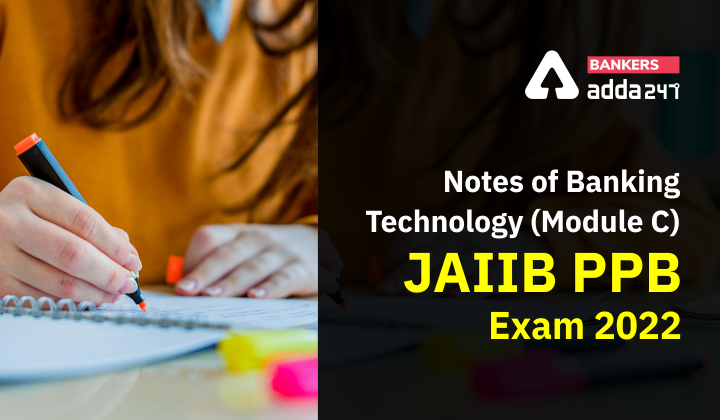



 GA Capsule for SBI Clerk Mains 2025, Dow...
GA Capsule for SBI Clerk Mains 2025, Dow...
 The Hindu Review October 2022: Download ...
The Hindu Review October 2022: Download ...
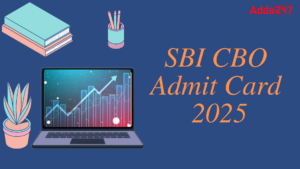 SBI CBO Admit Card 2025 Out at sbi.co.in...
SBI CBO Admit Card 2025 Out at sbi.co.in...

